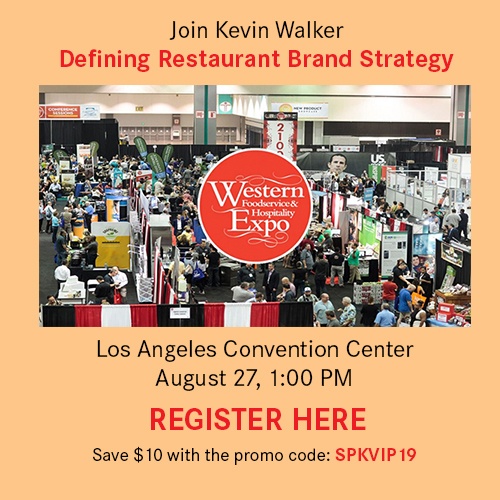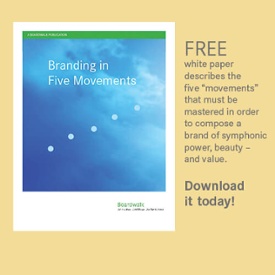 Open space. White space. Unclaimed territory. You often hear these metaphors when discussions of brand positioning are on the table. Obviously, no one is talking about actual geographic positions here. We’re talking about positions in the market’s collective mind, otherwise known as mindshare. But, mindshare alone, as valuable as it may be, is not enough. It only means that the market knows who you are. That’s it. If Oprah Winfrey only had mindshare, it would just mean we know she’s a celebrity. But there’s so much more to know about her. She’s a media mogul, she’s a self-made billionaire, she’s universally beloved, etc. A business wants to be known, true. But a modicum of fame is not enough to build a powerful brand. You have to be known for something. Like Oprah is known for something. Like Malala Yousafzai is known for something. Like Elizabeth Taylor is known for something. We experience all three of these famous women in unique and memorable ways. We wouldn’t want any one of them to be more like another. That’s how a business needs to be perceived. That leads to a powerful brand.
Open space. White space. Unclaimed territory. You often hear these metaphors when discussions of brand positioning are on the table. Obviously, no one is talking about actual geographic positions here. We’re talking about positions in the market’s collective mind, otherwise known as mindshare. But, mindshare alone, as valuable as it may be, is not enough. It only means that the market knows who you are. That’s it. If Oprah Winfrey only had mindshare, it would just mean we know she’s a celebrity. But there’s so much more to know about her. She’s a media mogul, she’s a self-made billionaire, she’s universally beloved, etc. A business wants to be known, true. But a modicum of fame is not enough to build a powerful brand. You have to be known for something. Like Oprah is known for something. Like Malala Yousafzai is known for something. Like Elizabeth Taylor is known for something. We experience all three of these famous women in unique and memorable ways. We wouldn’t want any one of them to be more like another. That’s how a business needs to be perceived. That leads to a powerful brand.
Developing a strategy for your brand is a vital part of brand building. Determining brand positioning is a key part of setting that strategy. We’ve talked about the brand exploration process elsewhere in this blog. Today, let’s focus on positioning. Your optimum positioning will be revealed by two facets of your brand explorations.
1 – Your one-on-one interviews
2 – Your survey of your competitive landscape
As part of your brand exploration, you’ll be interviewing members of all the different constituencies* that make up your market. You’ll want to start by interviewing your customers or clients, but you’ll also want to learn how your employees, your vendors, and others experience your brand. You’ll be looking for patterns, themes and common threads that span two or more constituencies. Any insight that pops up in more than one constituency can be taken as a truth. By launching this process, you’ll learn where you’re meeting market expectations and where you’re falling short. Negative truths can be easily rectified. Positive truths are the building blocks of your brand. If you dig deep enough, you’ll find one or more truths that are yours alone and can’t be matched by your competition. That’s gold. But you’re not done yet.
Ask Boardwalk to sleuth out the
perfect brand positioning for you.
You also have to survey your competitive landscape to find out where there is potential open territory is for you. How are your top five competitors branding themselves? Visit their websites. Sample and reverse engineer their products. Experience their brands in any way you can. Send in “secret shoppers” who can report back to you. What are their strengths and weaknesses? Develop a one-sentence positioning statement for each of them. Reduce those sentences to one word or phrase each. Let’s imagine those words are the words that best describe their brands:
1 – Old-school
2 – Tech-savvy
3 – Creative
4 – Scientific
5 – Gigantic
That means that these positions are already taken in the competitive landscape. You could position as the second entry in any one of these categories but that would defeat the purpose. You’re looking to deliver on a brand promise that no one else can match and there are already matches in all of these categories.
But let’s say you notice the market can support other categories as well. Categories like:
6 – Hard-working
7 – Intellectual
8 – Special Ops Team
9 – Fun-loving
10 – Sophisticated
These, and perhaps more, are the positions that are available to you. Now go back to the insights you gleaned from your one-on-one survey. Where does the truth about your brand fit? You may have learned that your market values you for the sophisticated strategies and techniques you employ to develop your solutions. You may notice your current competitors can’e easily pivot from their current positions to cover Sophisticated too. And any new competitor would be newbies and, therefore, could hardly claim to be the sophisticated choice. For you, claiming the mantle of Sophisticated could be an unbeatable positioning.
This, of course, is a wildly hypothetical scenario with totally unlikely categories. Sometimes, though, it’s easier to make one’s point with an exaggerated example. And I’m pretty sure you get the point. Use your one-on-one interviews to find out the truth about yourself. Use your competitive survey to find out the truth about the market. Plug yourself in where you see a perfect match. Then stick to it. That’s brand positioning.
* A constituency is any group whose perception of your brand is important to your future.
Best Branding Reads – Week of August 19, 2019
Does your brand measure up?
The inimitable Denise Lee Yohn speaks on the five dimensions of brand power. A very worthwhile 3-minute video.
How To Reinvent A Well-Known Brand
Successful CMO describes taking a well-known brand from good to great.
6 Ways Brands Can Respond In A Recession
This is important and worth sharing. Still, I worry that all this talk about a possible recession will become a self-fulfilling prophecy. Read this one and then no more of this. OK?
Why Culture Doesn’t Eat Strategy for Breakfast
The two exist in a symbiotic relationship. Can’t have one without the other.
New Logo, Identity, and Livery for Canada Jetlines
Very professionally done. But another smiley face logo? Really? IHOP this trend ends soon.
Starbucks New Creative Expression
The public doesn’t often get to see examples of really first-rate style guides. Starbucks makes theirs available to all. Tasty.
The Benefits Of Optimizing Brand Architecture
Thanks, Derrick Daye, for providing much-needed clarity on a topic that is confusing to many.



